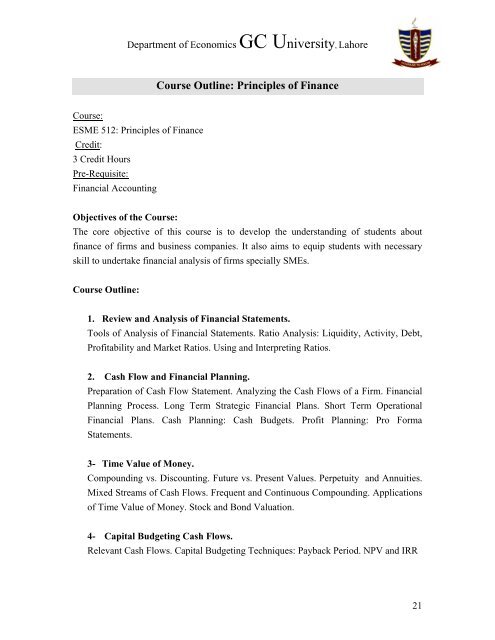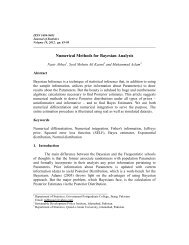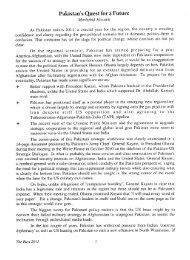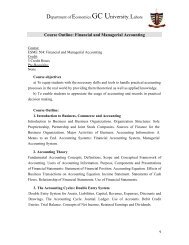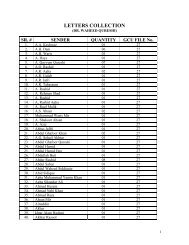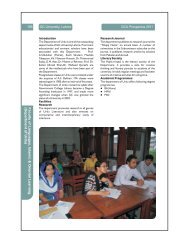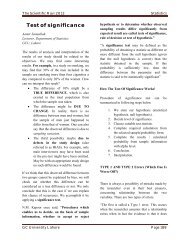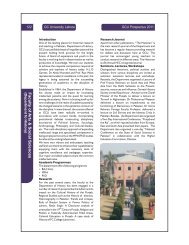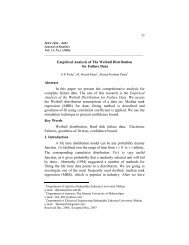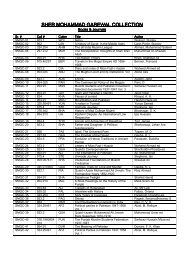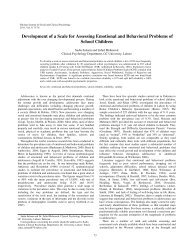Course Outline: Principles of Finance
Course Outline: Principles of Finance
Course Outline: Principles of Finance
Create successful ePaper yourself
Turn your PDF publications into a flip-book with our unique Google optimized e-Paper software.
Department <strong>of</strong> Economics GC University, Lahore<br />
<strong>Course</strong> <strong>Outline</strong>: <strong>Principles</strong> <strong>of</strong> <strong>Finance</strong><br />
<strong>Course</strong>:<br />
ESME 512: <strong>Principles</strong> <strong>of</strong> <strong>Finance</strong><br />
Credit:<br />
3 Credit Hours<br />
Pre-Requisite:<br />
Financial Accounting<br />
Objectives <strong>of</strong> the <strong>Course</strong>:<br />
The core objective <strong>of</strong> this course is to develop the understanding <strong>of</strong> students about<br />
finance <strong>of</strong> firms and business companies. It also aims to equip students with necessary<br />
skill to undertake financial analysis <strong>of</strong> firms specially SMEs.<br />
<strong>Course</strong> <strong>Outline</strong>:<br />
1. Review and Analysis <strong>of</strong> Financial Statements.<br />
Tools <strong>of</strong> Analysis <strong>of</strong> Financial Statements. Ratio Analysis: Liquidity, Activity, Debt,<br />
Pr<strong>of</strong>itability and Market Ratios. Using and Interpreting Ratios.<br />
2. Cash Flow and Financial Planning.<br />
Preparation <strong>of</strong> Cash Flow Statement. Analyzing the Cash Flows <strong>of</strong> a Firm. Financial<br />
Planning Process. Long Term Strategic Financial Plans. Short Term Operational<br />
Financial Plans. Cash Planning: Cash Budgets. Pr<strong>of</strong>it Planning: Pro Forma<br />
Statements.<br />
3- Time Value <strong>of</strong> Money.<br />
Compounding vs. Discounting. Future vs. Present Values. Perpetuity and Annuities.<br />
Mixed Streams <strong>of</strong> Cash Flows. Frequent and Continuous Compounding. Applications<br />
<strong>of</strong> Time Value <strong>of</strong> Money. Stock and Bond Valuation.<br />
4- Capital Budgeting Cash Flows.<br />
Relevant Cash Flows. Capital Budgeting Techniques: Payback Period. NPV and IRR<br />
21
Department <strong>of</strong> Economics GC University, Lahore<br />
5- . Leverage<br />
Break Even Analysis. Operating, Financial and Total Leverage.<br />
6- Working Capital and Current Asset Management.<br />
Net Working Capital Fundamentals. Cash conversion Cycle. Inventory Management.<br />
Account Receivables Management. Management <strong>of</strong> Receipts and Disbursements.<br />
Basic Text:<br />
<strong>Principles</strong> <strong>of</strong> Managerial <strong>Finance</strong> by Lawrence J.Gitman. 10 th Edition Pearson Education.<br />
Additional Readings:<br />
• Ross, SA, Thompson, S, Christensen, M, Westerfield, RW & Jordan, BD 2004,<br />
Fundamentals <strong>of</strong> corporate finance, 3rd edn., McGraw-Hill, Macquarie Park.<br />
• Frino, A, Kelly, S, Comerton-Forde, C, Cusack, T & Wilson, K 2004, Introduction to<br />
corporate finance, 2nd edn., Pearson, Frenchs Forest.<br />
• Peacock, R, Martin, P, Burrow, M, Petty, JM, Keown, AJ, Scott, DF, Martin, JD 2005,<br />
Financial management, 4th edn., Prentice Hall, Frenchs Forest.<br />
• Bishop, S, Faff, R, Oliver, B & Twite, G 2004, Corporate finance, 5th edn., Pearson,<br />
Frenchs Forest.<br />
22


